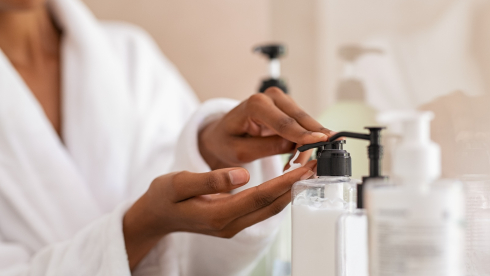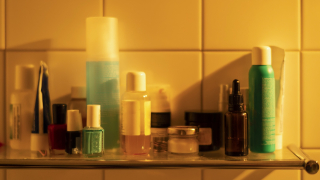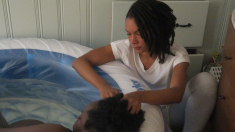Elizabeth Keckley’s pride got her many things: lashings, floggings, down-right beatings, and after 39 years, finally, her freedom.
New interest in Keckley’s story is inevitable, especially after Gloria Reuben’s haunting and drawing portrayal of the dressmaker and confidante to First Lady Mary Todd Lincoln. in Steven Spielberg’s Lincoln, a film based on the last four months of President Abraham Lincoln’s administration.
Her list of clients would be equivalent to any modern-day couturier and she got there just a few years after purchasing her freedom from a slavemaster. Keckley was indirectly involved in the war—from a fashion perspective, of course—as she was tasked to dress the wives of General Robert E. Lee, and Senator Jefferson Davis.
And that was all before she met Mrs. Lincoln.
In Behind the Scenes Or, Thirty Years a Slave and Four in the White House, Keckley’s voice is eerie. She writes with a brilliant vengeance recounting each incident that made her who she would become. One of her earliest memories involved getting beat at the age of five for rocking her mistress’ baby too hard, causing the infant to fall to the ground.
She didn’t cry. In fact, the Virginia born-Keckley wrote that her pride wouldn’t allow her to weep when being beaten. And there would be many other vivid accounts of her being violently disciplined for one reason or another.
Her mistress resented her for being the biological child of her husband. At 14, she was given to her master’s White son—her own brother—to serve as his slave on his North Carolina plantation. Again, she was faced with a mistress who took a great disliking to her and sought to ‘break her’ as much as possible.
In 1839, she had a child. Though she avoids acknowledging whether or not the child was a product of assault, it is widely reported that claim that Keckley was raped by local notable Alexander J. Kirkland and her son George was his offspring.
Soon after George’s birth, Elizabeth was relocated to Virginia, where she and her mother served yet another family. In 1847, the group moved to St. Louis, where Elizabeth was able to mingle with members of the local free Black community; there, she started to plan for her own exit from slavery.
Eventually, she would end up being the family’s only source of income when she discovered her penchant for sewing.
She writes, “With my needle, I kept bread in the mouths of seventeen peoples for two years and five months.” And it would be that talent that motivated her to work for her freedom.
James Keckley pursued Lizzie, as she was called, for years and she rebuffed his proposals many times. When she finally relented, the marriage was a source of great frustration, as her memoir recalls her husband’s laziness and disappointing demeanor. James had hidden a few important things during his courtship: his heavy drinking and the fact that he was not a free man, though he had claimed to be. The two separated after eight years of marriage and James died shortly thereafter.
In 1852, she was able to purchase freedom for herself and her child for the sum of $1,200
Elizabeth and George left St. Louis for Baltimore, where she briefly ran a school that taught young Black girls etiquette and sewing. Soon thereafter, they relocated to Washington DC, where she built up her client list as a seamstress through word-of-mouth.
Keckley meets Mrs. Lincoln on the day of her husband’s inauguration, as she’s frantically running to get ready to be presented as the new First Lady. In her autobiography, Keckley writes of her nervousness, “I went upstairs timidly, and entering the room with nervous step, discovered the wife of the President standing by a window, looking out, and engaged in lively conversation…”
Negotiations between Keckley and Lincoln took place quickly. The former slave would start immediately on several projects for Mrs. Lincoln; from there, their friendship would develop.
Because of her close relationship with Mrs. Lincoln, Keckley was around at pivotal moments in history. She writes about Blacks after the war and how their reality of freedom was almost uglier than their past with slavery. It was with the donation of Mrs. Lincoln and Frederick Douglas, along with others, that she started The Contraband Relief Association—an organization that would aid former slaves in adjusting to life as freed Blacks.
Tragedy further bonded the two women. George Keckley enlisted as a Union soldier and was killed in 1861; Mrs. Lincoln lost her 11-year-old son, Willie, the following year. Keckley was one of few people able to console the First Lady when her husband was assassinated in 1865.
After the release of Keckley’s book, Mrs. Lincoln took issue with some of the intimate details that appeared, including information about her financial struggles following the assassination of her husband. The dressmaker maintained that while she aimed to accurately portray the horrors of slavery and her own remarkable climb into middle class life, she’d wanted to improve her friend’s reputation (which had been sullied by erratic, desperate behavior following Mr. Lincoln’s death).
The memoir did not sell well, largely due to a smear campaign by journalist who took offense to Keckley’s portrayal of Mrs. Lincoln; it is rumored that her son, Robert Lincoln, worked to hinder distribution of the book out of embarrassment for his mother, whom he later committed to an asylum.
Keckley claims that the two women met and resolved their differences before Mrs. Lincoln’s death in 1882. She passed away in 1907.
James R. Sanders is a regular contributor to VOGUE Italia, The Huffington Post, FOX Interactive Media, and Topman GENERATION. In addition, he is also a fashion insider for LookLab.com.













